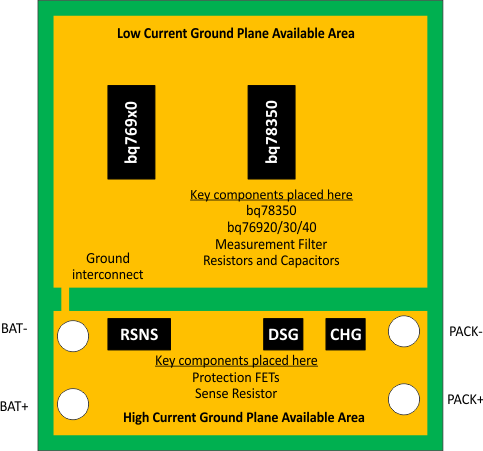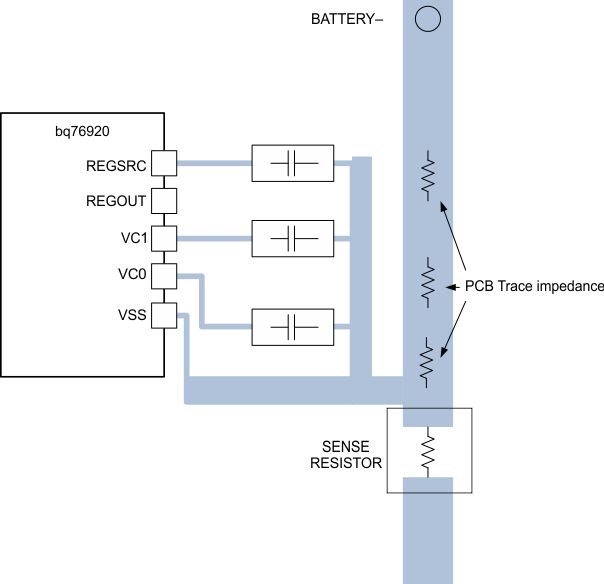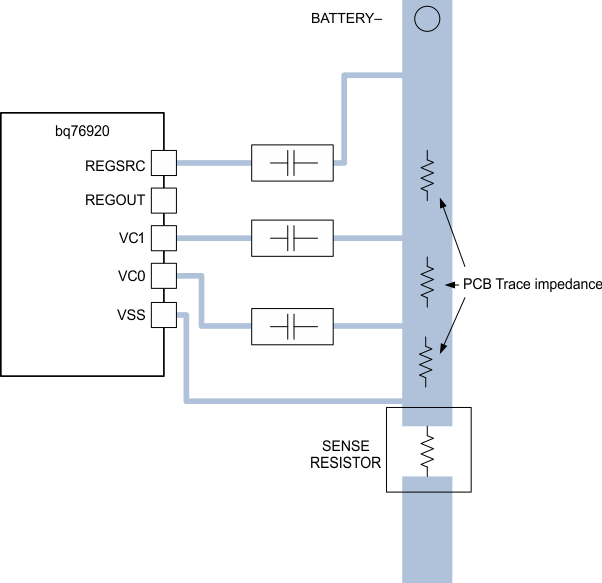SLUSBK2I October 2013 – March 2022 BQ76920 , BQ76930 , BQ76940
PRODMIX
- 1 Features
- 2 Applications
- 3 Description
- 4 Revision History
- 5 Device Comparison Table
- 6 Pin Configuration and Functions
- 7 Specifications
- 8 Detailed Description
- 9 Application and Implementation
- 10Power Supply Recommendations
- 11Layout
- 12Device and Documentation Support
- 13Mechanical, Packaging, and Orderable Information
Package Options
Mechanical Data (Package|Pins)
- DBT|30
Thermal pad, mechanical data (Package|Pins)
Orderable Information
11.2 Layout Example
Figure 11-1 shows a guideline of how to place key components compared to respective ground zones, based on the BQ76920, BQ76930, and BQ76940 EVMs.
 Figure 11-1 System Component Placement Layout vs. Ground Zone Guide
Figure 11-1 System Component Placement Layout vs. Ground Zone GuideCAUTION:
Care should be taken when placing key power pin capacitors to minimize PCB trace impedances. These impedances could result in device resets or other unexpected operations when the device is at peak power consumption.
Although not shown in the diagrams, this caution also applies to the resistor and capacitor network surrounding the current sense resistor.
 Figure 11-2 Good Layout: Input Capacitor Grounding With Low Parasitic PCB Impedance
Figure 11-2 Good Layout: Input Capacitor Grounding With Low Parasitic PCB Impedance Figure 11-3 Weak Layout: Input Capacitor Grounding with High Parasitic PCB Impedance
Figure 11-3 Weak Layout: Input Capacitor Grounding with High Parasitic PCB Impedance